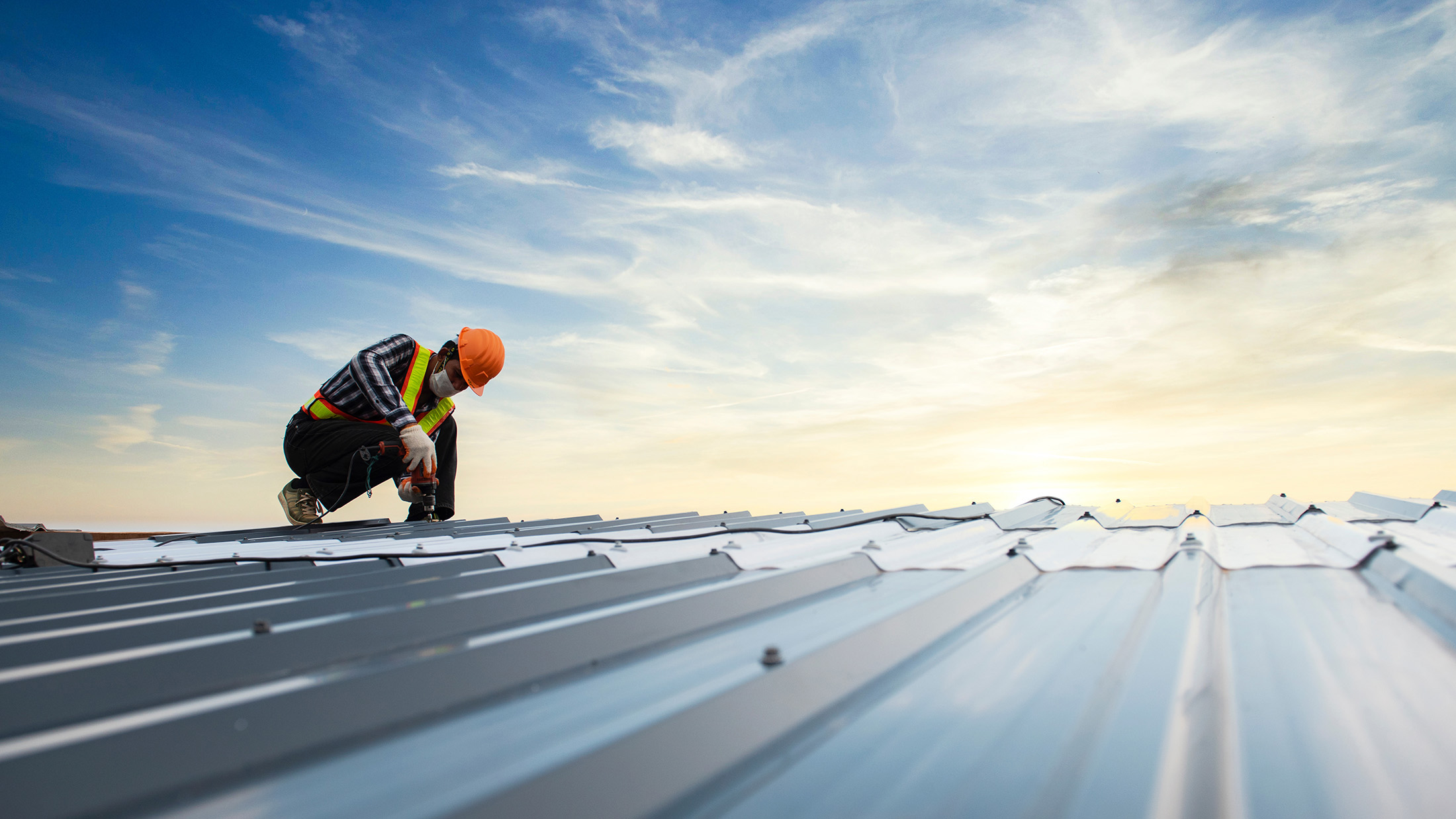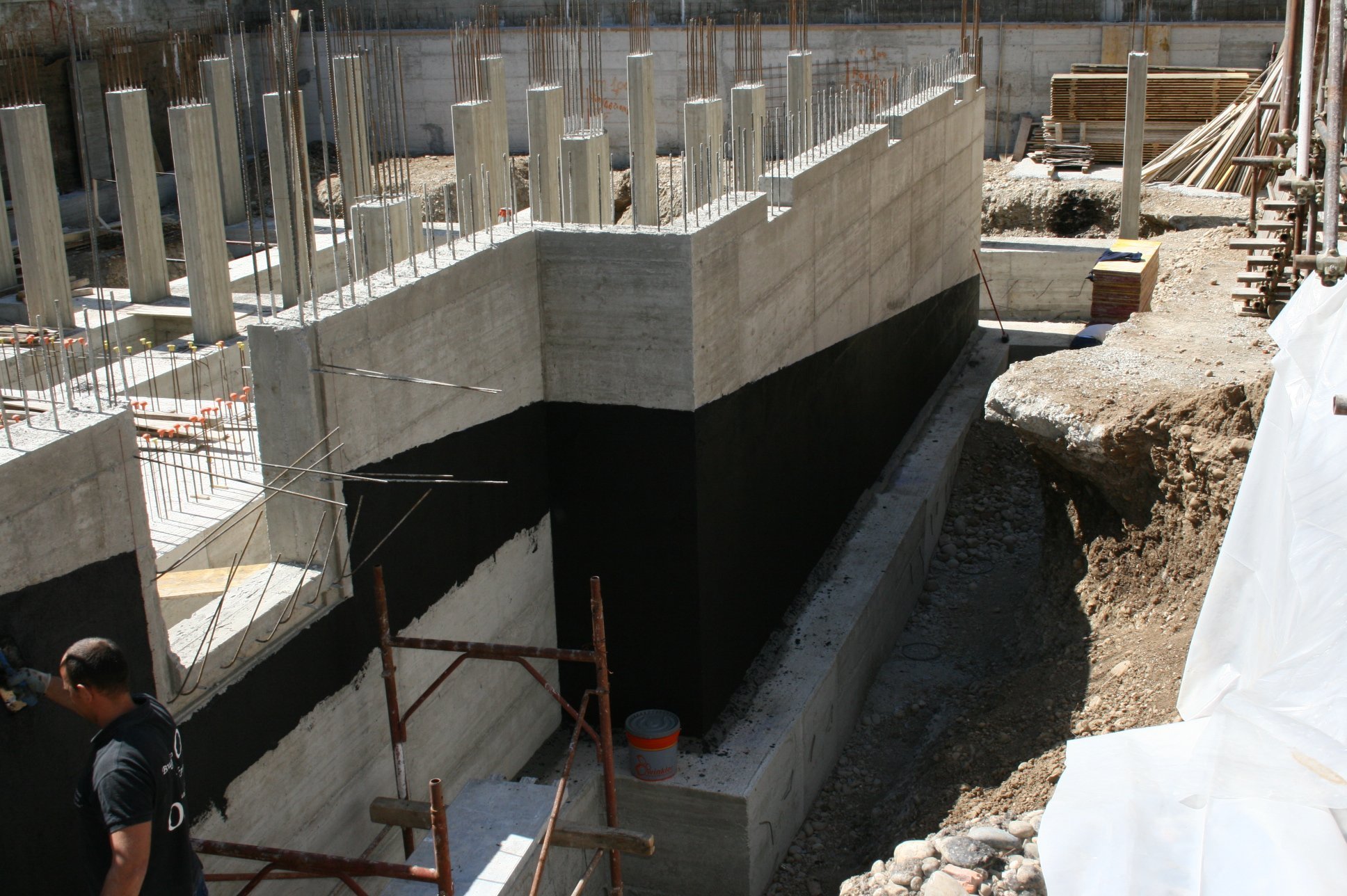Why Waterproofing Is Critical for Long-Lasting Structures: a Thorough Analysis
Waterproofing plays an essential duty in the long life of structures. It offers as a barrier versus wetness, which can lead to substantial problems like mold and mildew and damage. Comprehending the various waterproofing techniques and their implications is crucial for homeowner. The effects of disregarding this aspect can be serious. Checking out these components exposes not simply the requirement of waterproofing, yet likewise its more comprehensive effect on home worth and safety.
Recognizing Waterproofing: Definition and Value
Waterproofing offers as a necessary barrier versus moisture invasion, safeguarding structures from possible damage. It incorporates different methods and products developed to prevent water infiltration into buildings, ensuring longevity and capability. The relevance of waterproofing can not be overstated, as it safeguards versus a variety of issues, including mold development, damage of products, and structural weakening.Effective waterproofing solutions can include membranes, finishes, and sealers, each customized to details environments and structural designs. By producing a safety layer, these remedies aid maintain a dry interior, which is vital for the health of passengers and the preservation of building value.Moreover, buying waterproofing at the building and construction stage is significantly a lot more economical than attending to water-related problems after they develop. Comprehending the principles of waterproofing is critical for engineers, building contractors, and property proprietors intending for sturdy, resistant frameworks that hold up against the examination of time and ecological challenges.

The Effect of Water Damages on Structural Honesty
Water damage poses considerable threats to architectural stability, mainly through the growth of mold and mildew. These microorganisms not only compromise interior air top quality but additionally cause material destruction with time. Furthermore, long term direct exposure to dampness can damage architectural parts, raising the likelihood of collapse or failure.
Mold and Mildew Development
Dampness breach postures a significant threat to the architectural honesty of structures, causing the proliferation of mold and mildew and mold. These fungis flourish in damp environments, typically settling in covert areas such as wall surface dental caries, under floor covering, and in ceilings. Their growth not only develops unattractive spots and unpleasant smells yet likewise contributes to a decline in interior air top quality, presenting health and wellness risks to occupants. Mold and mildew and mold can endanger products like wood and drywall, causing additional wetness retention and creating a cycle of damage. Early detection and removal are important to avoid considerable growth, underscoring the requirement of effective waterproofing measures. Resolving dampness problems immediately can safeguard both the health of inhabitants and the long life of the framework.
Architectural Weakening Threats
Unchecked moisture breach can result in extreme architectural weakening, jeopardizing the stability of buildings. Water damage typically affects fundamental parts, such as light beams, columns, and walls, causing endangered load-bearing capability. Prolonged direct exposure to moisture can create materials like wood to rot and steel to corrode, damaging their structural residential properties. This damage may result in cracks, bowing, or perhaps disastrous failings if left unaddressed. Basement waterproofing Omaha. In addition, water infiltration can weaken the dirt below foundations, triggering settling or changing that further worsens structural threats. Because of this, carrying out reliable waterproofing solutions is important in maintaining a structure's architectural honesty, preventing costly repair work, and guaranteeing safety for occupants. Proper maintenance and proactive steps are vital in alleviating these substantial threats linked with water damages
Kinds Of Waterproofing Techniques and Materials
Waterproofing methods and materials play a crucial role in safeguarding structures from water damages. Trick strategies include membrane waterproofing, which supplies a physical barrier; liquid waterproofing solutions that create a smooth coat; and cementitious waterproofing options recognized for their sturdiness and convenience of application. Recognizing these different methods is important for selecting one of the most proper technique for specific building and construction requirements.
Membrane Waterproofing Strategies
Membrane layer waterproofing techniques are essential for shielding frameworks from the damaging results of water infiltration. These methods include the application of waterproof membrane layers that produce an obstacle versus moisture. The 2 main kinds of membrane systems are sheet membrane layers and liquid-applied membranes. Sheet membranes, normally made from materials such as rubberized asphalt or polycarbonate, are built and can be turned out and stuck to surface areas. In comparison, liquid-applied membranes are applied as a liquid and treatment to develop a smooth layer. Both types offer adaptability and toughness, dealing with different applications, including roofings, basements, and structures. Proper installment and upkeep of these membrane layers guarantee long-lasting protection, improving the lifespan and stability of the structures they guard.
Liquid Waterproofing Solutions
Liquid waterproofing solutions represent a flexible option to standard membrane layer systems. These services normally include the application of liquid layers that heal to create a smooth, long lasting barrier against water seepage. Different types of liquid waterproofing materials are readily available, consisting of polyurethane, asphalt, and acrylic-based formulations. Each type supplies one-of-a-kind homes, such as versatility, adhesion, and UV resistance, making them appropriate for diverse applications. The application procedure usually entails splashing or rolling the fluid onto surface areas, enabling coverage of intricate shapes and details, which reduces potential powerlessness. Liquid waterproofing solutions are particularly helpful for areas with motion, such as joints and cracks, as they can suit structural changes without jeopardizing integrity, making certain resilient protection for frameworks.
Cementitious Waterproofing Options
Various cementitious waterproofing options are offered, offering reliable services for numerous building demands. These systems normally contain a mix of cement, sand, and ingredients, making them suitable for both indoor and exterior applications. Among the preferred options are crystalline waterproofing items, which react with wetness to create a water resistant barrier within the concrete matrix. In addition, flexible cementitious layers offer improved flexibility, accommodating minor structural motions without endangering the waterproofing integrity. It is likewise typical to make use of cementitious sealants for joints and fractures, making certain extensive defense versus water review infiltration. In general, cementitious waterproofing choices are valued for their longevity, ease of application, and compatibility with different substrates, making them a favored option in modern-day building and construction practices.
Long-Term Expense Cost Savings With Efficient Waterproofing
Purchasing reliable waterproofing solutions can significantly minimize lasting expenses for structure proprietors and developers. By stopping water breach, these options alleviate damage to structural aspects, reducing the demand for expensive repair services and upkeep gradually. Waterproofing additionally safeguards indoor coatings and home furnishings, minimizing replacement expenses and enhancing the overall lifespan of the property.Moreover, effective waterproofing can bring about power savings by enhancing insulation and minimizing humidity-related concerns. This causes lower home heating and air conditioning costs, contributing to an extra sustainable financial design for residential property management.Additionally, the application of waterproofing steps can enhance building value by guaranteeing a completely dry, risk-free, and durable setting. While the preliminary financial investment in waterproofing may appear substantial, the lasting financial benefits much surpass the in advance prices, making it a prudent choice for anyone included in building and construction or residential property administration.

The Duty of Waterproofing in Building Ordinance and Rules
Waterproofing plays a significant function in building ordinance and laws, reflecting its relevance in modern construction techniques. These codes are created to ensure security, resilience, and sustainability in structures, highlighting the demand for efficient waterproofing actions. Various nationwide and neighborhood building ordinance describe details requirements for waterproofing materials and strategies, particularly in areas susceptible to water invasion, such as basements and foundations.Compliance with these guidelines not just protects structures from moisture-related damage yet additionally safeguards public health and wellness by avoiding mold and mildew development and architectural instability. Inspectors frequently assess waterproofing components during the building and construction procedure to assure adherence to established standards. As climate modification raises the frequency of extreme weather condition occasions, the duty of waterproofing in building ordinance is anticipated to advance, potentially bring about more stringent laws. In general, the integration of waterproofing in regulative frameworks underscores its vital duty in attaining durable, resistant frameworks.
Situation Researches: Successful Waterproofing Solutions
Effective waterproofing solutions have actually been applied throughout different jobs, showcasing ingenious techniques that improve architectural stability and durability. One noteworthy example is the remodelling of the historic Smith Tower in Seattle, where sophisticated membrane layer systems were used to safeguard the framework from water breach. This approach not just preserved the structure's visual but also expanded its lifespan.In one more instance, a large business building in Miami utilized crystalline waterproofing technology, which responds with moisture to create an obstacle versus water. This check that option showed reliable against the city's high humidity and hefty rainfall.Additionally, a bridge in San Francisco underwent an extensive waterproofing treatment utilizing epoxy coatings, which greatly lowered maintenance prices and improved sturdiness. These case research studies illustrate the performance of tailored waterproofing methods in varied settings, underscoring the value of picking suitable approaches to deal with certain challenges and guarantee the longevity of frameworks.
Ideal Practices for Implementing Waterproofing Techniques
Applying effective waterproofing techniques calls for careful preparation and adherence to best methods - Landscape drainage Omaha. Initially, it is essential to conduct a complete website analysis to recognize potential locations of water access. This evaluation notifies the choice of proper materials and methods tailored to particular ecological problems. Making use of high-quality, durable waterproofing membranes can considerably boost security versus moisture.Additionally, correct installment methods are crucial; guaranteeing that surface areas are tidy and devoid of impurities promotes perfect attachment. Normal upkeep checks ought to be scheduled to recognize any type of indicators of wear or damages, enabling timely repairs.Moreover, incorporating drain systems can efficiently manage water overflow, preventing buildup around structures. Educating all employees associated with construction concerning waterproofing demands more guarantees uniformity and adherence to best techniques. Eventually, an aggressive technique to waterproofing can significantly expand the life expectancy of frameworks and reduce lasting maintenance prices
Often Asked Inquiries
Exactly How Does Waterproofing Affect Energy Performance in Buildings?
Waterproofing significantly improves power effectiveness in structures by preventing wetness breach. This decreases the need for heating & cooling, maintains constant interior temperatures, and eventually lowers energy intake, adding to long-term sustainability and expense financial savings.
Can Waterproofing Be Applied to Existing Structures?
Waterproofing can indeed be put on existing frameworks. Numerous techniques, such as membrane layers, finishings, and sealants, make it possible for property owners to improve protection versus dampness, thereby extending the framework's integrity and minimizing potential damage gradually.
What Are the Signs of Inadequate Waterproofing?
Signs of insufficient waterproofing consist of water stains on walls, mold and mildew development, peeling off paint, moldy odors, and wetness in cellars - Water Solutions. These indicators suggest possible structural damage and the demand for immediate interest to stop further degeneration
Just How Often Should Waterproofing Be Inspected or Preserved?
Waterproofing ought to be inspected a minimum of every year, especially in areas with hefty rainfall or changing temperature levels. Routine maintenance warranties early discovery of problems, advertising architectural integrity try here and lengthening the life expectancy of the structure.
Are There Eco-Friendly Waterproofing Options Available?
Environmentally friendly waterproofing alternatives are progressively available, using sustainable products such as bio-based polymers and natural sealers. These alternatives not just protect frameworks but additionally lessen ecological effect, interesting environmentally aware contractors and building owners.